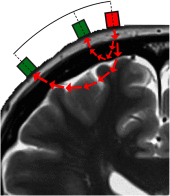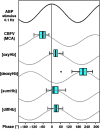Assessing low-frequency oscillations in cerebrovascular diseases and related conditions with near-infrared spectroscopy: a plausible method for evaluating cerebral autoregulation?
- PMID: 30689678
- PMCID: PMC6156398
- DOI: 10.1117/1.NPh.5.3.030901
Assessing low-frequency oscillations in cerebrovascular diseases and related conditions with near-infrared spectroscopy: a plausible method for evaluating cerebral autoregulation?
Abstract
Background: Cerebral autoregulation (CA) is the brain's ability to always maintain an adequate and relatively constant blood supply, which is often impaired in cerebrovascular diseases. Near-infrared spectroscopy (NIRS) examines oxygenated hemoglobin (OxyHb) in the cerebral cortex. Low- and very low-frequency oscillations ( and to 0.01 Hz) in OxyHb have been proposed to reflect CA.
Aim: To systematically review published results on OxyHb LFOs and VLFOs in cerebrovascular diseases and related conditions measured with NIRS.
Approach: A systematic search was performed in the MEDLINE database, which generated 36 studies relevant for inclusion.
Results: Healthy people have relatively stable LFOs. LFO amplitude seems to reflect myogenic CA being decreased by vasomotor paralysis in stroke, by smooth muscle damage or as compensatory action in other conditions but can also be influenced by the sympathetic tone. VLFO amplitude is believed to reflect neurogenic and metabolic CA and is lower in stroke, atherosclerosis, and with aging. Both LFO and VLFO synchronizations appear disturbed in stroke, while the former is also altered in internal carotid stenosis and hypertension.
Conclusion: We conclude that amplitudes of LFOs and VLFOs are relatively robust measures for evaluating mechanisms of CA and synchronization analyses can show temporal disruption of CA. Further research and more coherent methodologies are needed.
Keywords: cerebral autoregulation; cerebrovascular diseases; low-frequency oscillations; near-infrared spectroscopy; risk of stroke.
Figures





References
-
- Paulson O. B., Strandgaard S., Edvinsson L., “Cerebral autoregulation,” Cerebrovasc. Brain Metab. Rev. 2(2), 161–92 (1990).CEMREV - PubMed

